En Passant is one of the initial chess tips & tricks that beginners learn. As a result, many think that the En Passant chess rule is not for serious players. Some players don't care to learn this at all. If you have a similar mindset, I am sorry, but it's your loss.
This special chess rule is equally popular among club players and grandmasters. For instance, Carlsen used this rule when defeating Karjakin at the Sinquefield Cup 2018. Changing your mind already? If yes, let me tell you more about what is the En Passant rule in chess and how to play it.
En Passant Chess Rule | Everything You Need to Know
Pawns are unlike any other chess piece, often acting as secret weapons to surprise your opponent. Let’s dive into their unique rule and understand how to use them effectively.
1. Definition of En Passant
En Passant is a special capture rule for pawns in chess that allows them to capture enemy pawns on the adjacent squares. Pawns usually capture diagonally while moving forward. Please note that pawns CANNOT capture pawns/pieces on their adjacent squares on regular moves.
But, a pawn can capture enemy pawns from the adjacent squares using En Passant only when the opponent pawns have moved two squares simultaneously. In other words, pawns can capture their enemy pawns horizontally only when the enemy pawns have moved for the first time.
Remember that the attacked pawns must be the ones that moved for the first time; otherwise, the En Passant chess rule isn't valid.
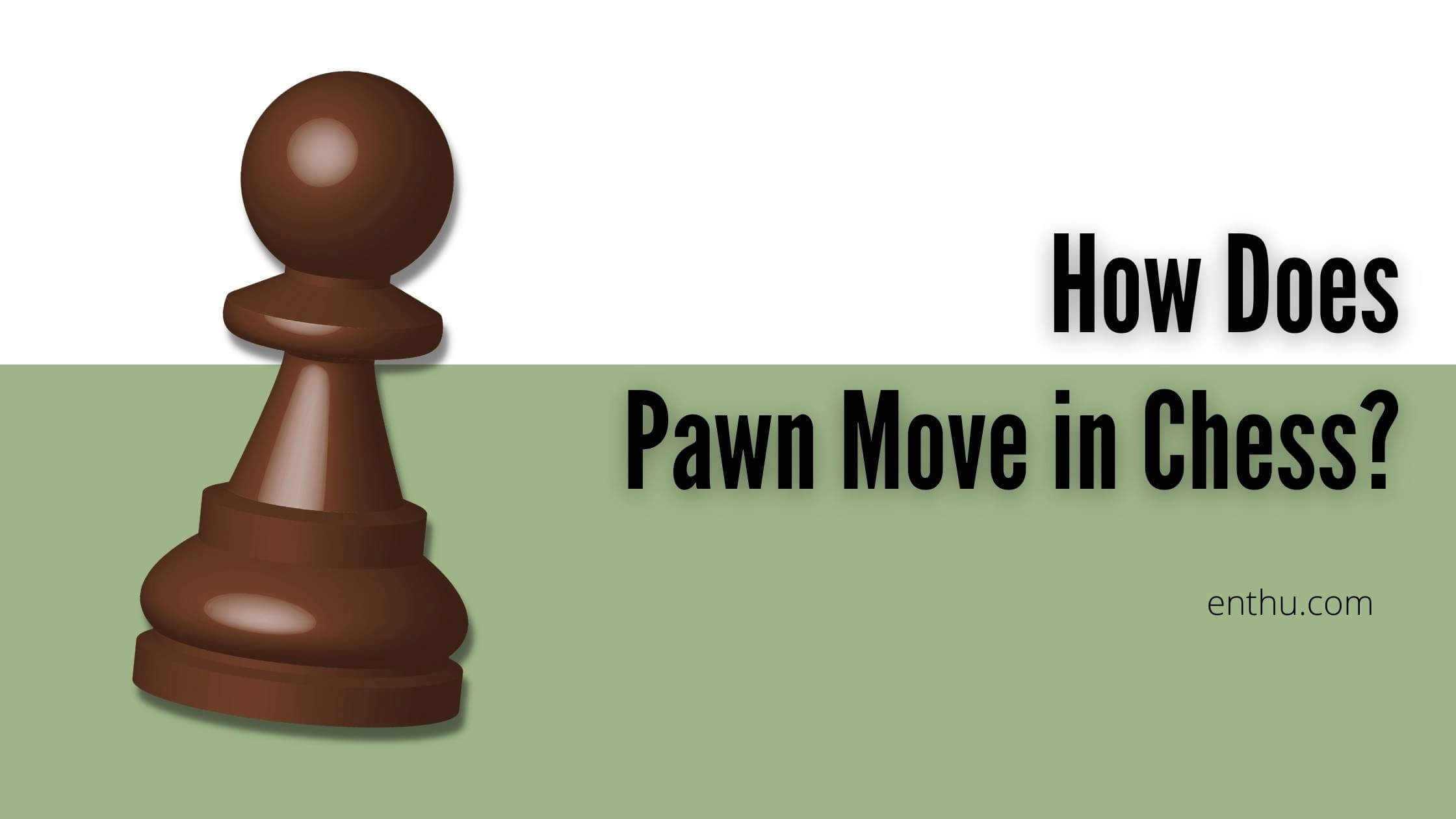
How to Play
Let’s take a historical chess match to discuss how to play En Passant in chess: Wilhelm Steinitz vs Bernhard Fleissig at Vienna in 1882. You might not have heard their names, but Wilhelm Steinitz and Bernhard Fleissig were great chess players during the late 19th century.
It's a simple game of chess, opening with the French defense. So, Steinitz is playing white, and Fleissig is playing black. Steinitz began by playing the King's pawn opening with a white pawn at e4. And, Fleissig replied back 1…e6
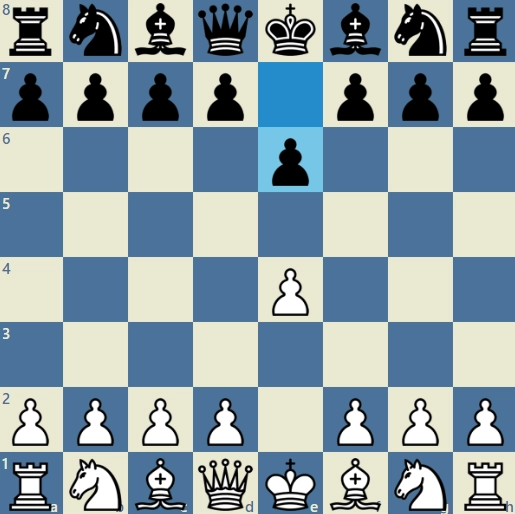
Next, Steinitz continued to play the King's pawn by forwarding it to e5. To this, Fleissig replied with the Queen's pawn at 2…d5
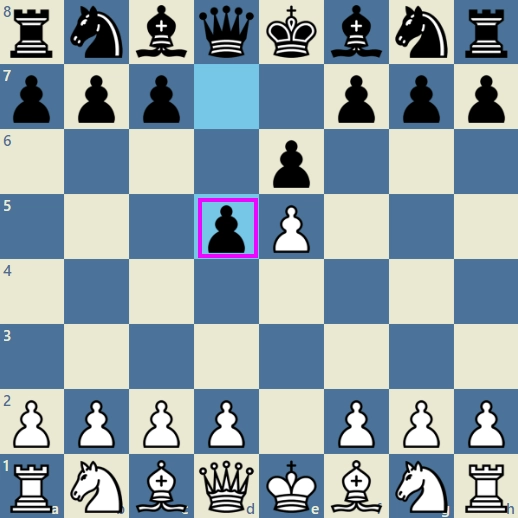
As you can see in the above image, the black pawn at d5 is just beside the white pawn e5. At that point in the game, White (Steinitz) wanted to capture the black pawn at d5 with his white pawn e5.
Usually, he couldn't do that. But, as 2…d5 was the d-pawn's first move, and it was right beside the white e-pawn, it could be captured by using the En Passant strategy. This is how you can capture an opponent's pawn using this rule.
2. Where will the Pawn Sit after Capturing?
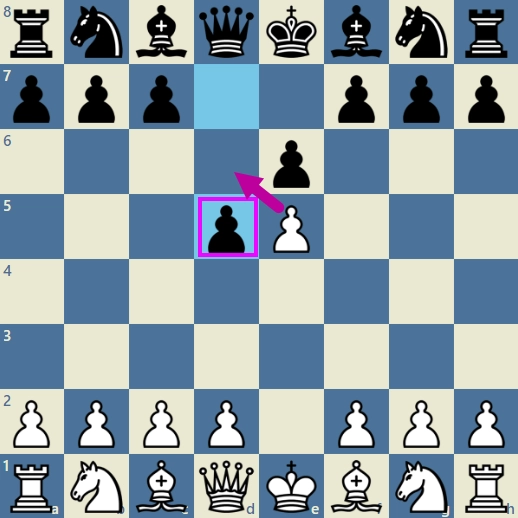
Yep, that question kept me worried when I was taking chess lessons. In the above example, the white pawn at e5 captured the black pawn at d5. Now, the question is, where will the pawn go after capturing? Will it move to d5 because it captured the d5-pawn? The answer is: NO.
The capturing pawn doesn't go to the adjacent file after using this special capturing chess law. Instead, it will move just like a pawn moves to one of its immediate diagonal squares after capturing in regular moves. In this case, the pawn will move to d4 as if it captured the d-pawn at d4.
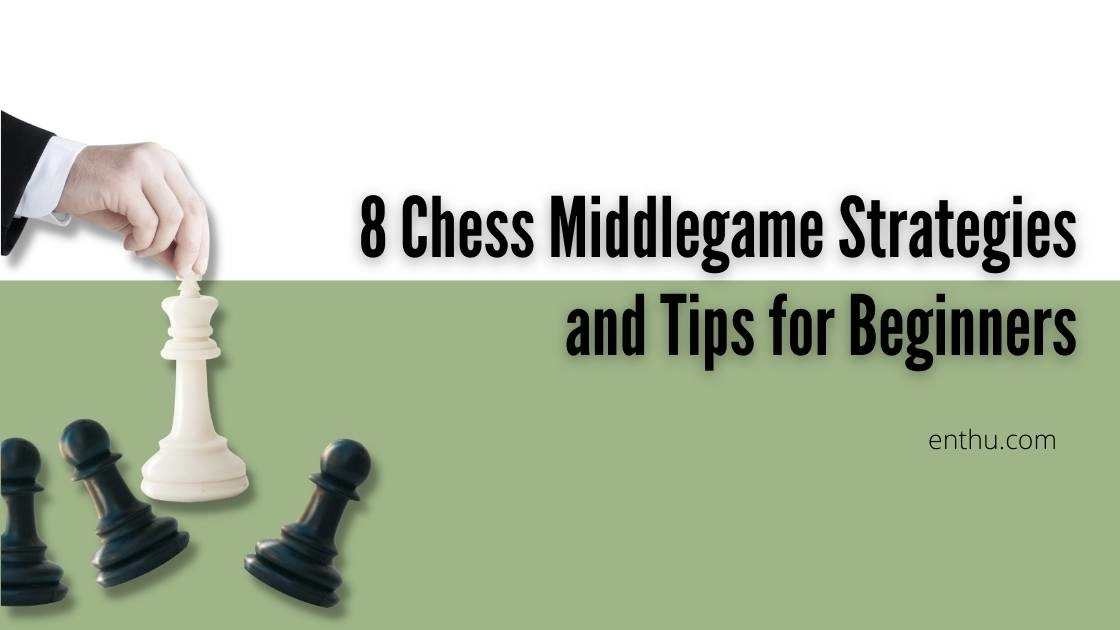
3. The FIDE Approved Rules
Of En Passant The rules are nothing but what I have explained above. In simpler words, the rules for this special chess rule are the terms & conditions under which it's applicable. Let's get going with DOs and DONTs.
4. Pawns Only As
The moment beginners hear about En Passant, many get excited and often assume pawns can capture in unusual ways—sometimes even horizontally! But let’s clear this up: En Passant is a special rule that applies only to pawns.
No matter how tempting the position looks, you cannot use En Passant to capture other pieces with a pawn. Not even if the enemy king is standing right next to your pawn! That’s just not how the rule works.
Simply put: En Passant is a pawn-only capturing rule, used exclusively against pawns under very specific conditions.
5. Capture Pawns
That Moved for the First Time While En Passant is a brilliant secret weapon for pawns, it also comes with lots of restrictions.
For instance, the En Passant rule is applicable only when the enemy pawn has moved for the first time. If it has already moved once and then it's moved to the adjacent square to your pawn; you can't capture it.
It is out of the league for your pawn. Take a look at the below picture. Here, the white pawn is e4, and the black pawn is at d6.
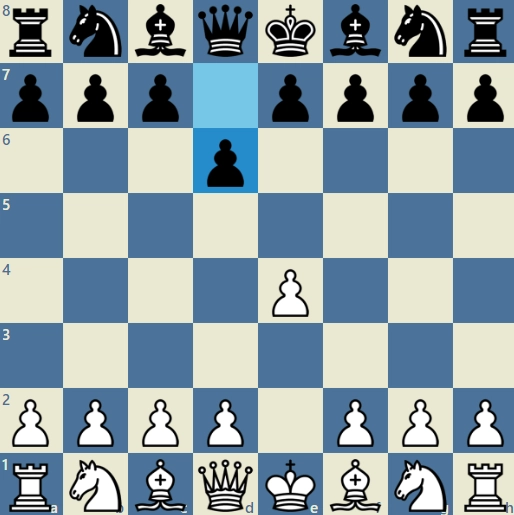
In the next move, the white pawn moves to e5, and the black pawn moves one square forward and reaches the d5 square.
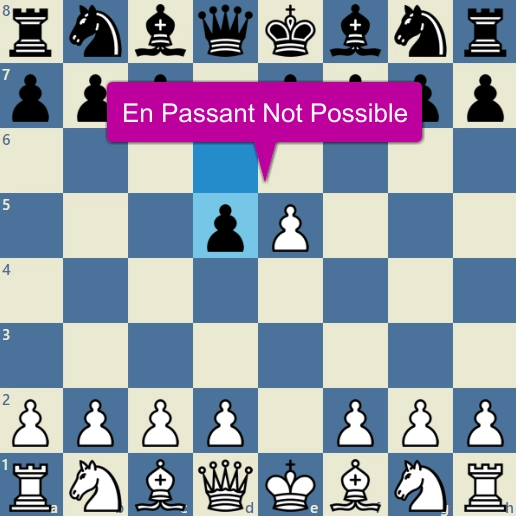
Now that both the pawns are in adjacent squares, can the white pawn attack the black pawn? No, not at all. Why? Because it wasn't the black d-pawn's first move, it changed its square in the previous move.
Therefore En Passant isn't applicable. And, if you still go for the capture, it will be illegal as per FIDE laws of chess.

6. Capture Pawns
That Moved Two Squares At One Move Yep, you read it right. According to FIDE, you can attack another pawn using En Passant only when the attacked enemy pawn has moved two squares in one go.
A pawn can move two squares in a single move if it is its first move. Therefore, the En Passant is applicable only when the attacked pawn has moved first time for two squares in one move.
The History
Of En Passant Now that you know how to play En Passant, let's dive into the history of this special chess move.This word came from the French words en passing, which means "in passing."
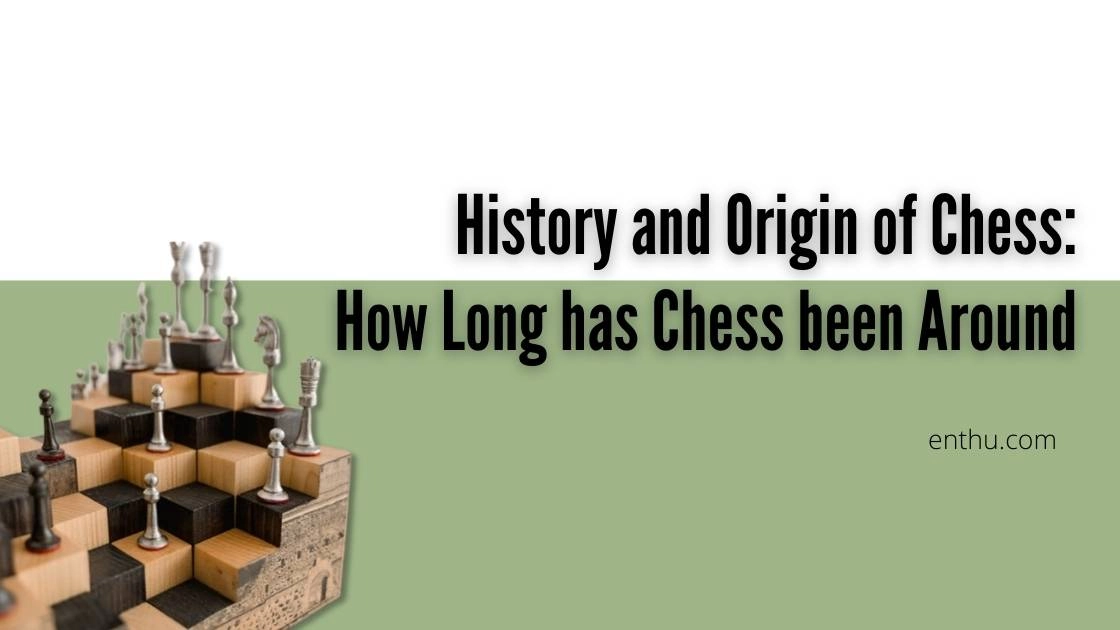
Over the course of time, English speakers picked up this term, but the term remained French. According to A Short History of Chess by Henry Davidson, the rule of En Passant in chess was introduced along with its two-square first move.
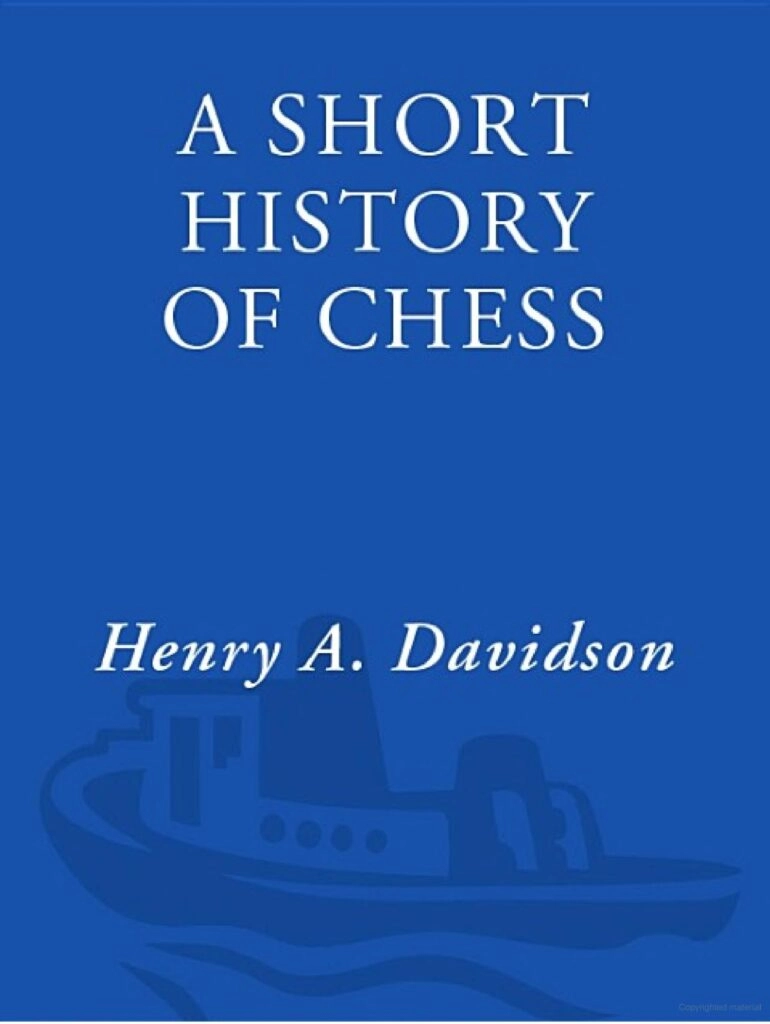
Goodreads It all happened during the end of the medieval era. Before that, chess in the west was played according to the Arabian chess rules and regulations. That way, the games went on for a longer duration, and people wanted to speed it up.
Therefore, rules like checkmate, stalemate, the mad queen, bishop's modern movement, etc., were added to the game. For pawns, the two-square move was added. By then, most chess players began the games by playing the pawn for two squares at the first move.
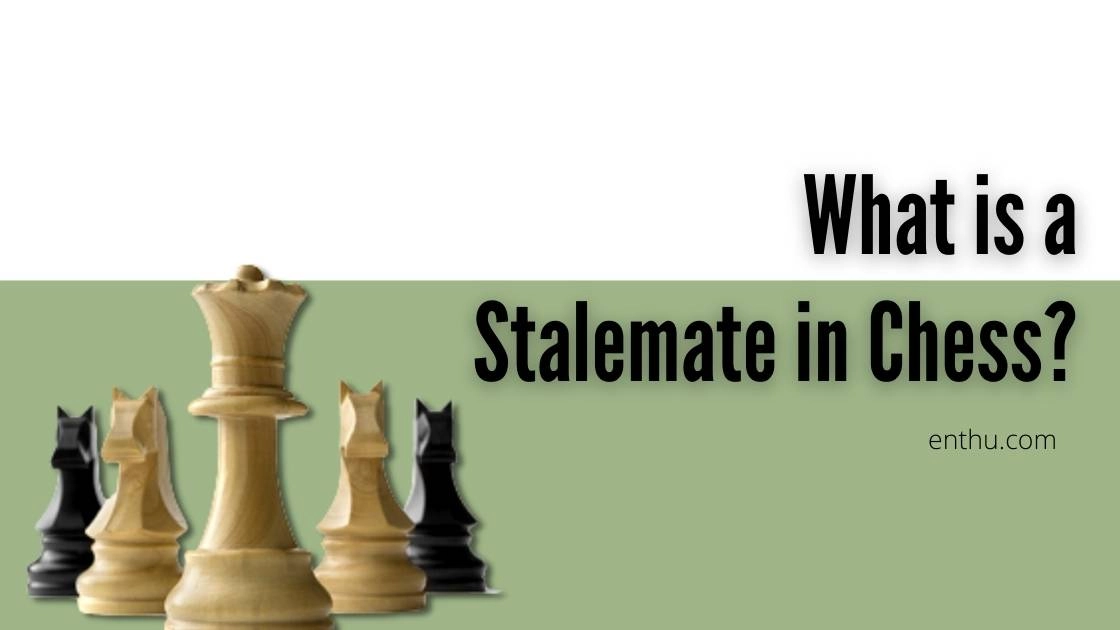
This was making the pawns invincible to their enemy counterparts. Therefore, En Passant was introduced to chess so that nobody could move a pawn past an enemy pawn without any challenge.
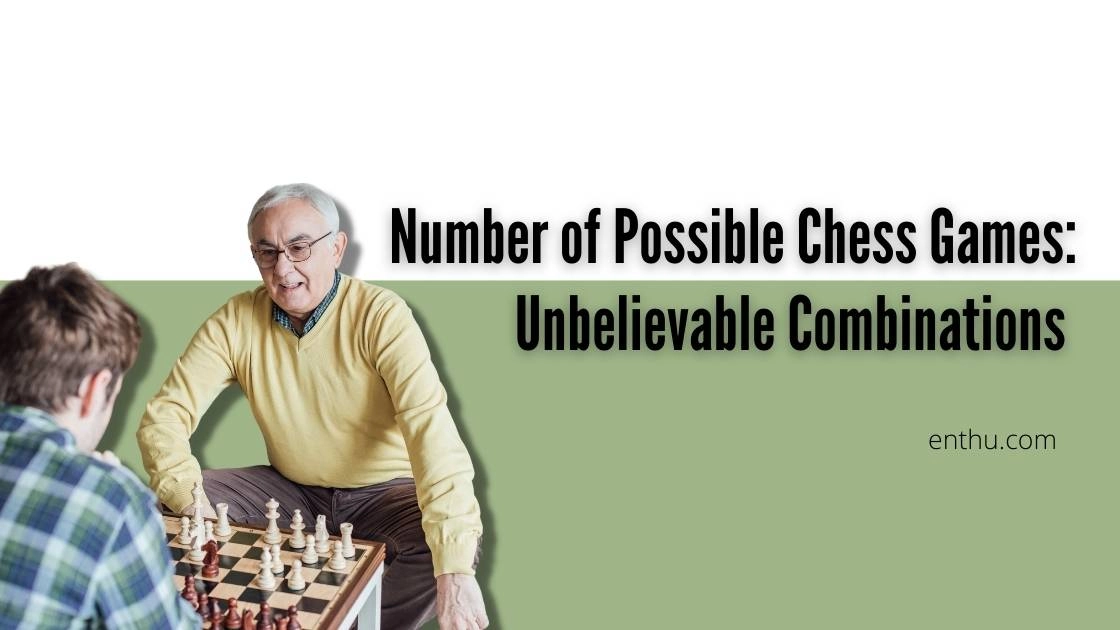


Conclusion
Dear readers, En Passant is undoubtedly a special pawn capture rule. However, it has its pros and cons. Sometimes, your opponent can trick you into playing En Passant to gain tempo in the game.
It can be anything from gaining dominance over the center to breaking your defense. So, think hard before using En Passant but don't shy away. Also, if you're a beginner, I suggest you use it. Mostly because many amateur players aren't even aware of this rule. I bid you farewell with this. Until next time!
FAQs
1. Is En Passant legal in chess?
There are three things that you need to keep in mind when playing En Passant. Firstly, it's only to capture enemy pawns. Secondly, the captured pawn must have moved two squares at a time. Thirdly, it should be the captured pawn's first move.
If you keep these points in mind, then En Passant is totally legal. Also, do not forget that En Passant is a FIDE-approved rule.
2. How many times can you En Passant?
You can use this rule as many times as you can. However, if you are asking for a particular pawn, then it's only one. Even though there is no rule for that, it's not practically possible to En Passant more than once.
Because to En Passant, you must be on the fifth rank. And after capturing using this rule, the pawn moves to the sixth rank. Therefore, it's practically impossible to use this rule more than once.
3. What are the three special rules in chess?
En Passant, pawn promotion, and castling are the three special rules in the game of chess. These are the only rules that allow unconventional moves in the game without breaking any FIDE laws of chess.



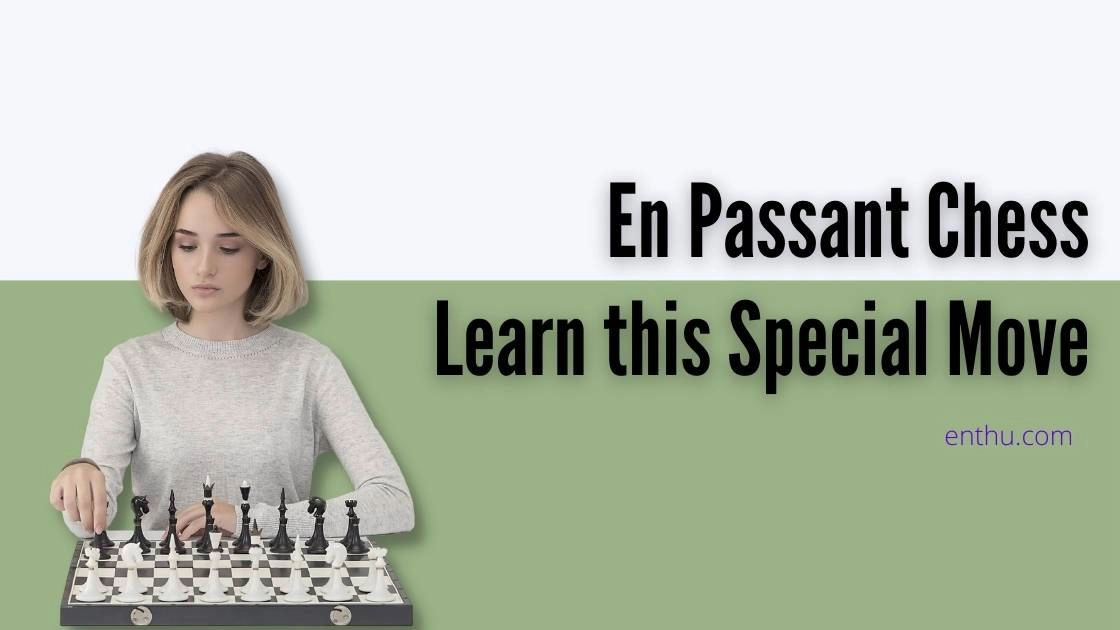



Comments